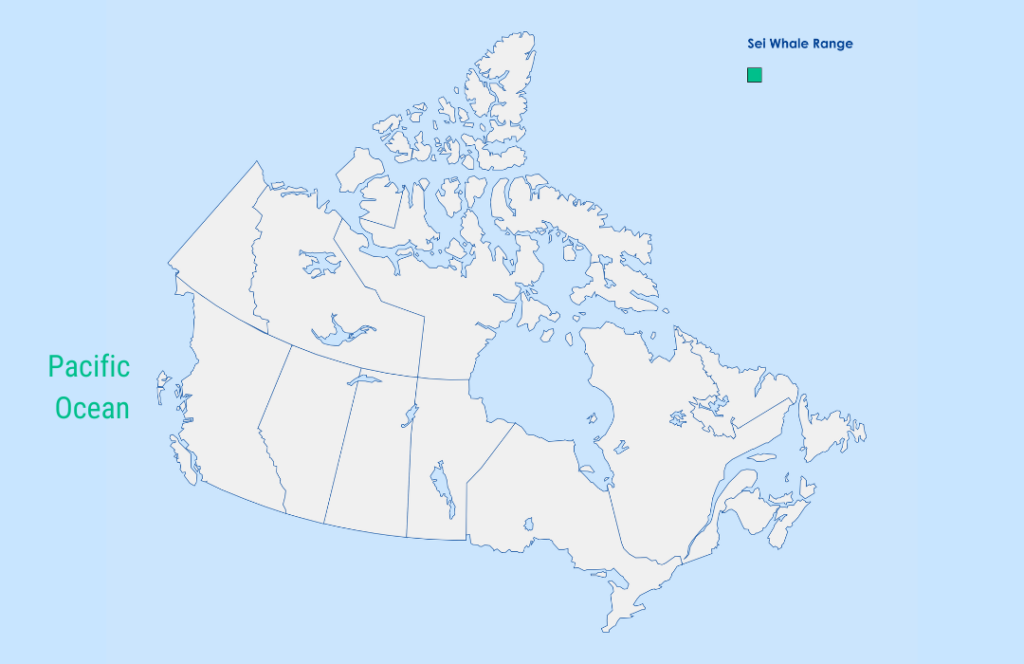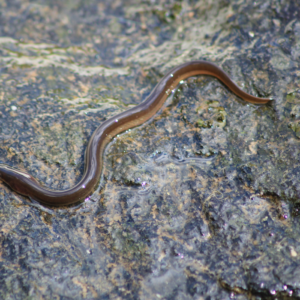Sei Whale
This whale is an incredibly fast swimmer—but it’s also disappearing fast. Only by taking action can we stop them from vanishing altogether. Save endangered species today by joining one of our campaigns!
Help End the ExtinctionVital Signs
- Common name: Sei Whale
- Latin name: Balaenoptera borealis
- Conservation Status: Endangered (Pacific Population), Data Deficient (Atlantic Population)
- Range: Pacific Ocean (add map image if possible)
- Life span: Up to 74 years with an average of 70 years
- Size: average 14-15 metres long, weight 20 tonnes; on average, females are 0.5 m larger than the males. The longest Sei Whale on record is 20 m in length

The Sei Whale is grey on the top and grey-white on its stomach. However, these whales can have colour variations which include light-coloured flippers or a streak of white that extends to behind the ear. They are also baleen whales, meaning they don’t have teeth.
Sei Whale Facts
- Is in the same family as the Blue Whale
- Is able to expand its throat while feeding
- Prefer temperate water in deep, offshore areas
- Though they mainly eat plankton, Sei Whales also eat squid and some types of fish
- Are incredibly fast—can reach speeds of 56 km/h
Threats
The largest threat to the Sei Whale is the lack of recovery in their population, which declined when commercial whaling was still legal in Canada.
There are also many factors that could be indirectly affecting the Sei Whale population. These include habitat loss due to commercial fishing, noise and traffic from boats, and contamination from chemicals.
Sei Whales are also at risk due to climate change, pollution, and being hit by ships. They can also become tangled in fishing nets and gear.
What’s Being Done
Commercial Whaling was stopped in Canada in 1976, but Sei Whales haven’t been seen on the Pacific coast since then. Sei Whales are included in a recovery strategy targeting a few other kinds of whale in the Canadian Pacific, which aims to restore their populations.
This species is protected under the Species At Risk Act. Under the Marine Mammal Regulations of the Fisheries Act, these whales are protected from being disturbed unless they are being hunted, and hunting them requires a permit.
Hunting Sei Whales commercially is prohibited due to their classification as “protected” from the International Whaling Commission.
Canada has committed to the goal of protecting 30% of lands, ocean, and freshwater in Canada by 2030. This goal will help protect ecosystems, restore habitats, and fight climate change. All these things are a step in protecting Canada’s at-risk animals—so let’s hold the federal government to their promise.
How to Help
- Make Earth-Friendly Consumer Choices: Purchase sustainably harvested seafood. Look for products that are Marine Stewardship Council certified. You can also avoid products (like foreign cars) shipped overseas in container ships.
- Take Precautions: Do not flush chemicals down your drain. Dispose of them safely at your local hazardous waste centre or contact your city to find out where to dispose of them appropriately.
- Learn: Stay informed about endangered species by signing up for Nature Canada’s monthly e-newsletter.
- Spread The Word: Passing on information is the best way to get more people on board to save our nature’s wildlife.
- Help Out: Protect marine habitats and species at risk by becoming an Ocean Defender.
- Find out more: Help us end the extinction by taking action for nature today—visit conservation websites like Nature Canada or join one of our campaigns!
Resources
- Animal Diversity Web – Sei Whale
- SARA – Species
- SARA Recovery Strategy Series – Recovery Strategy for Blue, Fin, and Sei Whales in Pacific Canadian Waters
- WWF – Sei Whale



